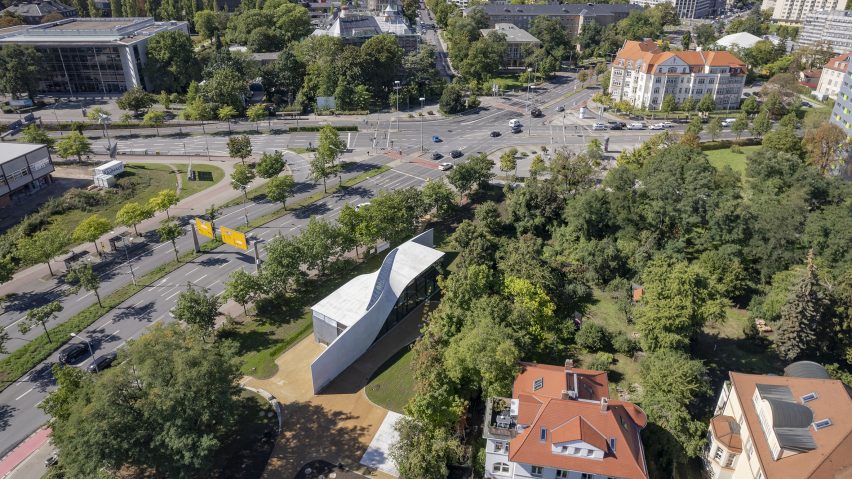
Henn and TU Dresden complete world's first carbon concrete building
German architecture firm Henn and the Technical University of Dresden have completed the world's first building made of carbon concrete – a form of concrete reinforced with carbon fibre instead of steel.
Called the Cube, the 243-square-metre building was constructed as a test of the new material and will provide a laboratory and event space for the university campus.
Its distinctive feature is a thin, twisting facade that both visually references the textile quality of carbon fibre and is formally enabled by the material, which is lighter and stronger than traditional concrete.
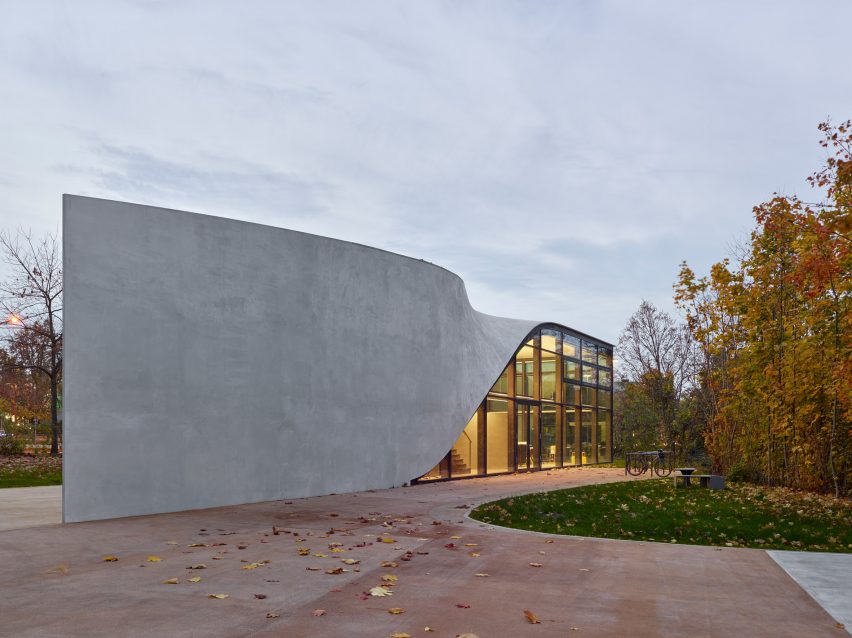
Henn describes the design as one where the wall and ceiling are not separate components but merge together into one organic continuum.
The architects wanted to embody a vision for the future with the design, marrying environmental responsibility with a new-found formal freedom.
According to Henn head of sustainability Giovanni Betti, the slim line of the Cube's facade was made possible by the use of carbon fibre reinforcement, which is rust-proof and so doesn't need to be covered in as much concrete.
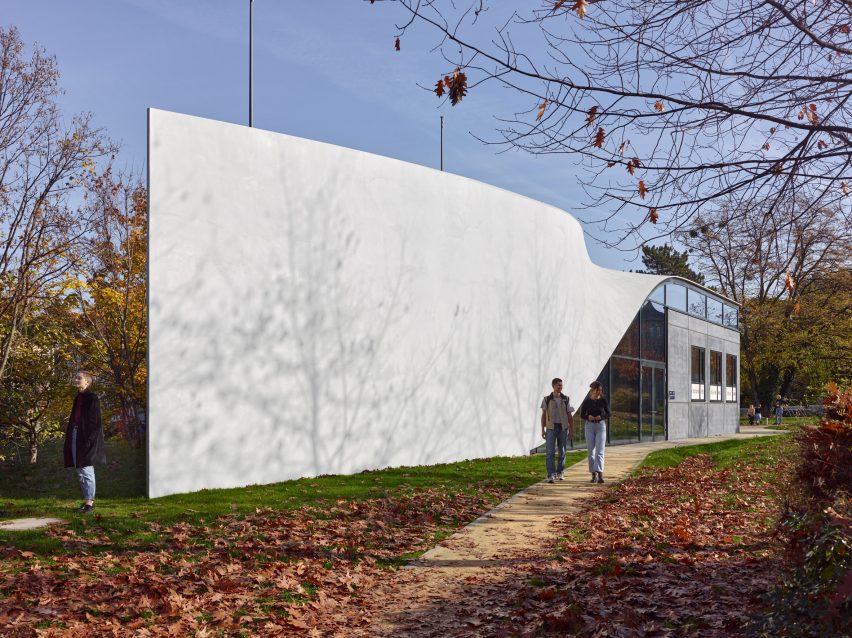
"Carbon fibre is four times lighter and six times stronger than steel and is not subject to corrosion," Betti told Dezeen.
"This means that the reinforcement does not have to be encapsulated in as much concrete to protect it from water and a same-sized section will be able to carry a higher load."
"Components and structures can be designed thinner, with material savings of 50 per cent or more. This can reduce CO2 emissions and the consumption of other valuable resources, like water and sand — there is a global sand shortage and the stories on concrete sand mafias around the world are wild and fascinating."
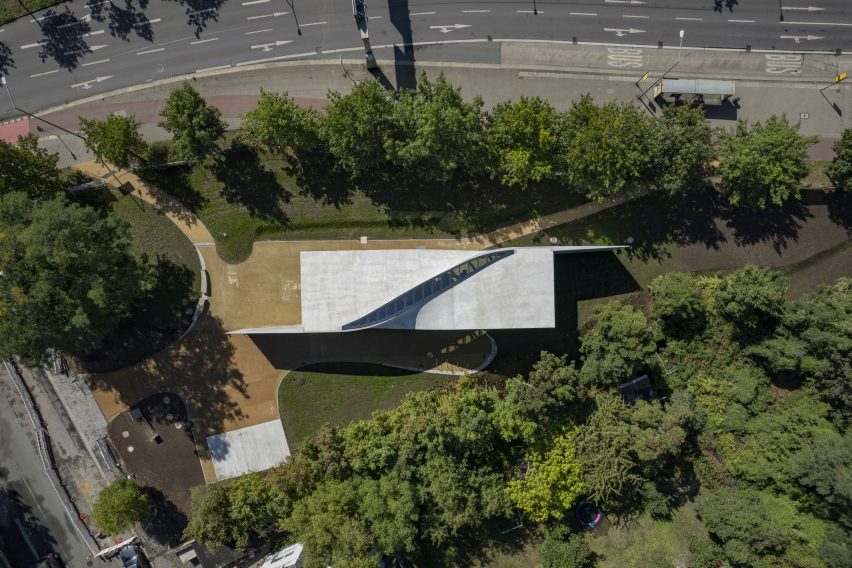
The design of the Cube is completed with ample glazing on both sides as well as across the top of the building, where a skylight cuts diagonally across the volume. The undulating shapes of the glazing mirror the building's twisted form, while framing views of the surrounding garden.
The Cube also takes advantage of another property of carbon fibre: its conductivity. The concrete walls of the building are equipped with insulation pads, heating elements and interactive touch surfaces.
"Carbon fibre is conductive and running a light current through it can generate heat," said Betti. "This can even be used to monitor structural integrity."
The Cube's concrete elements were made using two methods of fabrication: the light-coloured twisted facade was made using shotcrete that was sprayed onto carbon fibre sheets overlaid on a plywood formwork, while the smaller dark grey box was made from prefabricated concrete panels, also containing layers of carbon sheets.
The Cube was announced in 2021 and developed as part of the Carbon Concrete Composite (CCC) research programme, a government-funded research project that is currently the largest in German construction. This is where the building's name originates; CCC can also be thought of as C³, or C cubed.
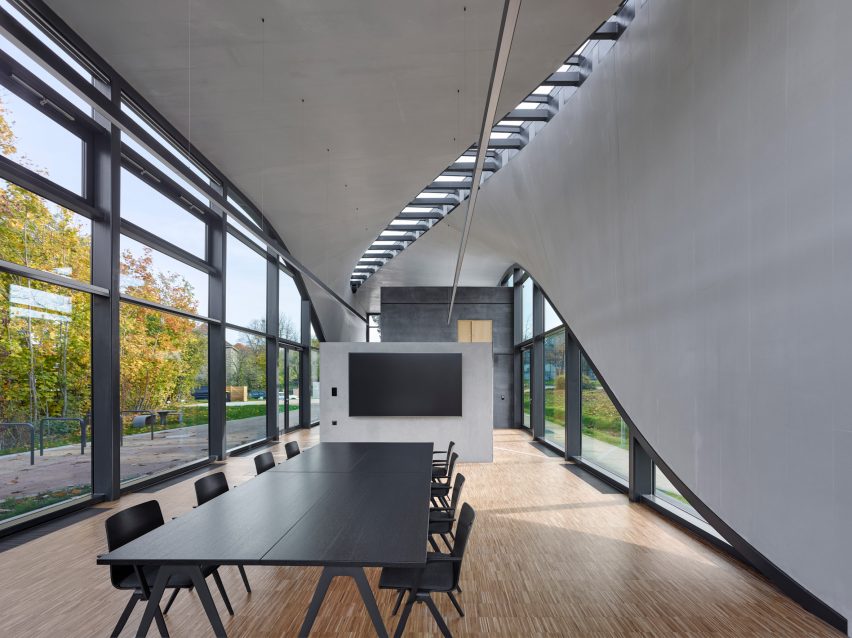
Carbon concrete was developed at TU Dresden along with several other universities worldwide. According to the researchers, studies have shown that for a comparable bridge design, carbon concrete has about 30 per cent less global warming potential (GWP) than conventional construction.
This is despite the fact that carbon fibre by itself has a high carbon footprint — it is about eight times more carbon intensive than steel per unit weight. But because of its strength, less material is needed as reinforcement.
The rust-proof nature of carbon fibre will also give the concrete a lifespan that the researchers say is "significantly increased" compared to traditional concrete buildings, further reducing the carbon cost over time.
There is also current research into the recycling and potential of bio-based carbon fibres.
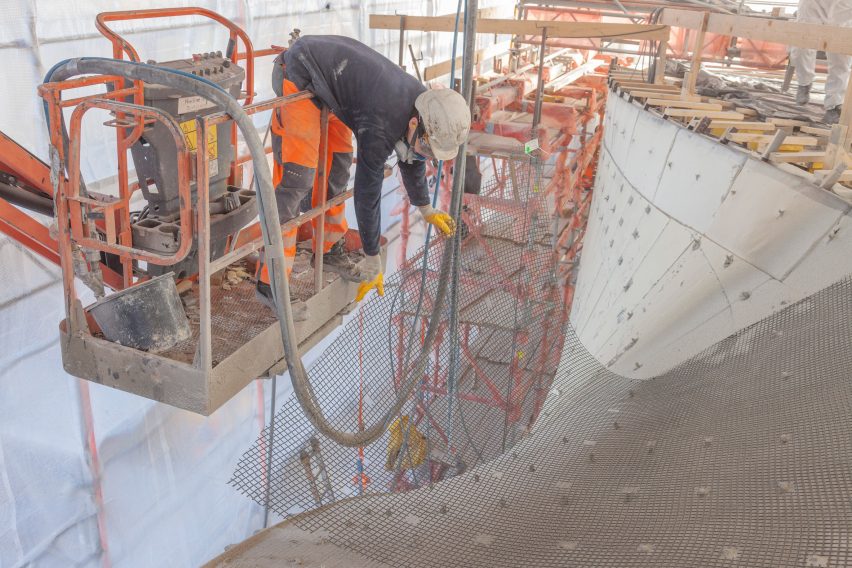
Concrete is among the world's most consumed materials, second only to water, and is estimated to account for around four to eight per cent of global carbon emissions.
To keep up with the demand for construction while meeting climate targets, the race is on to come up with a scalable environmentally friendly concrete solution. Examples include Seratech's carbon-neutral concrete, made using carbon dioxide captured directly from factory flues, and the University of Colorado's algae concrete.